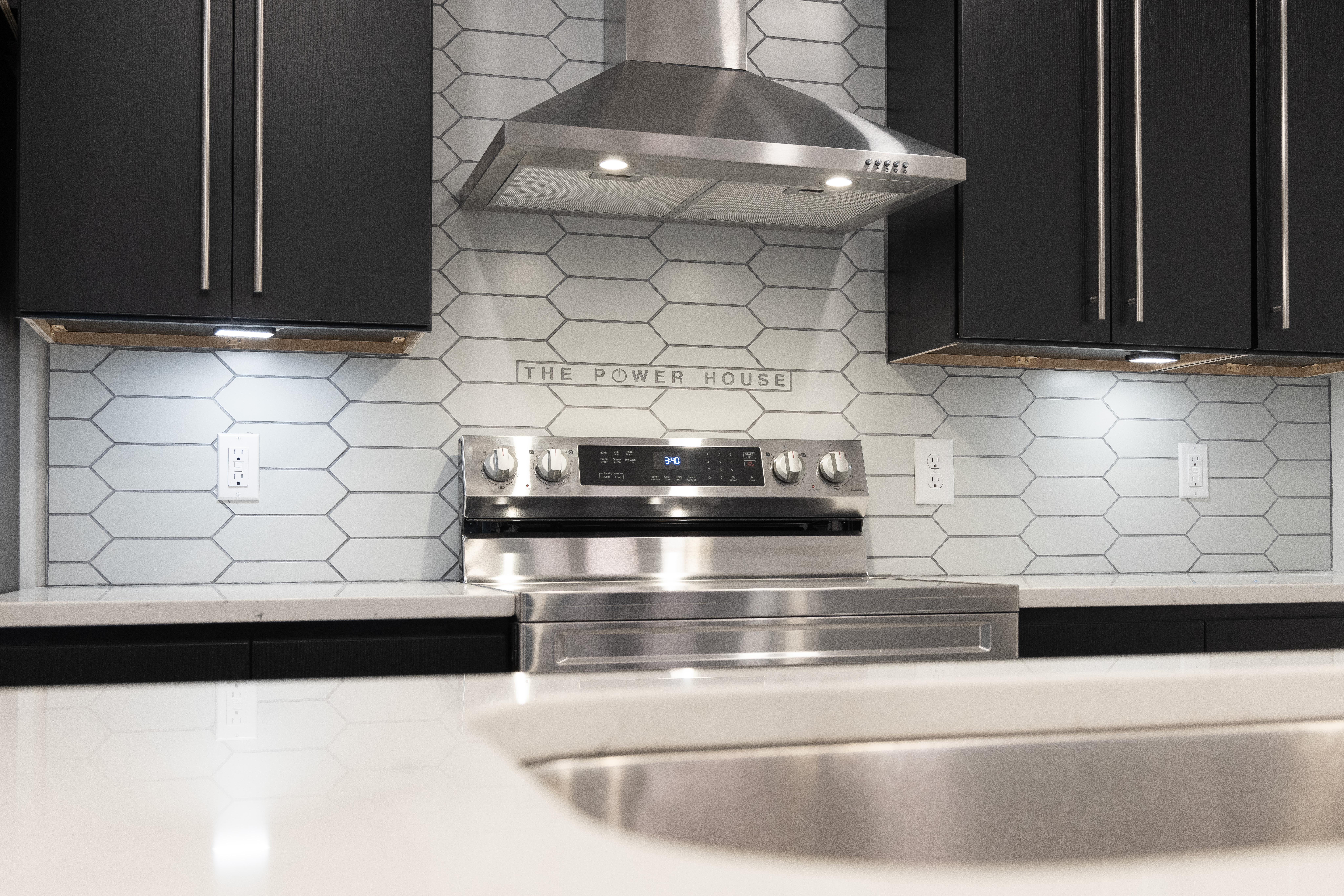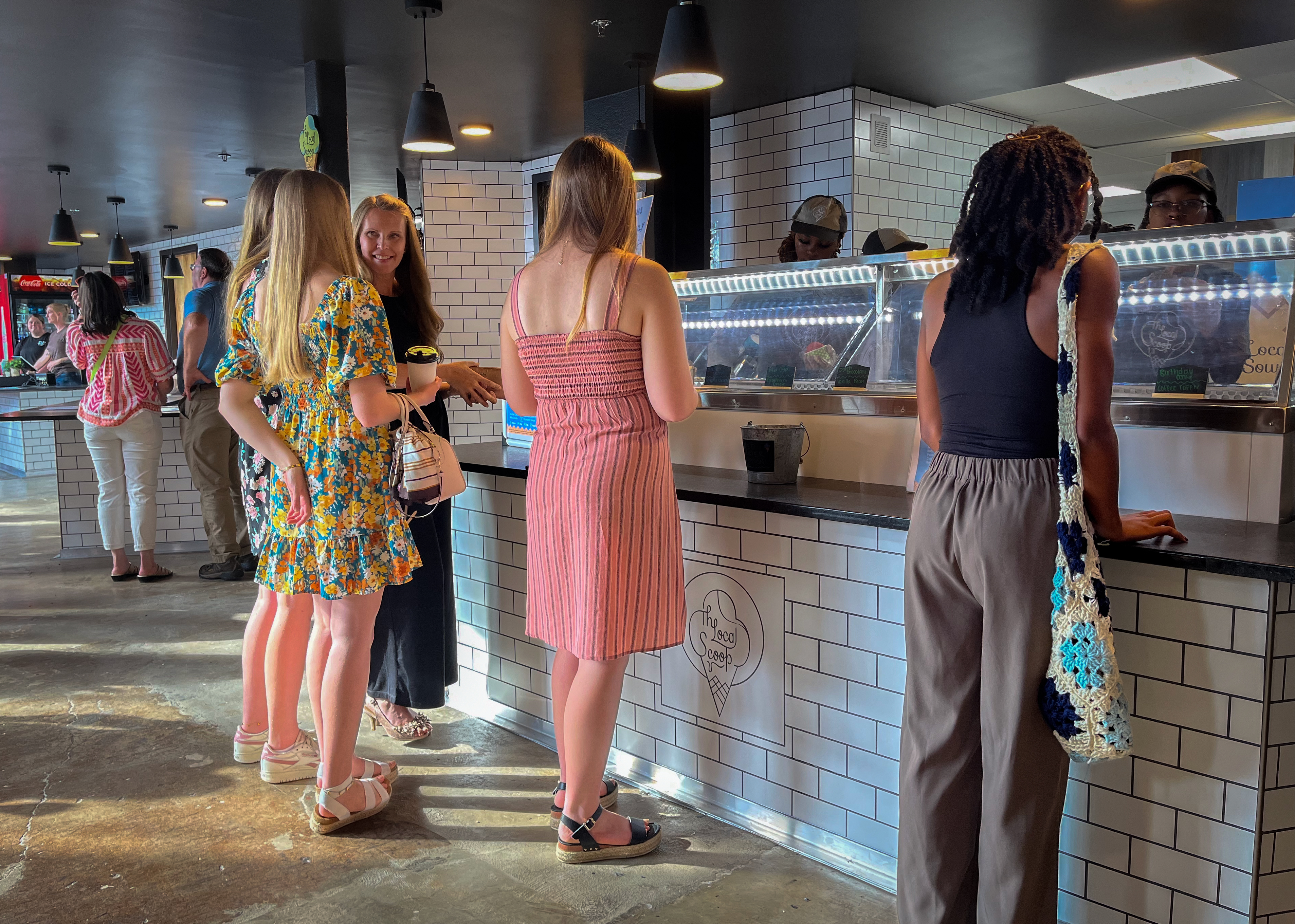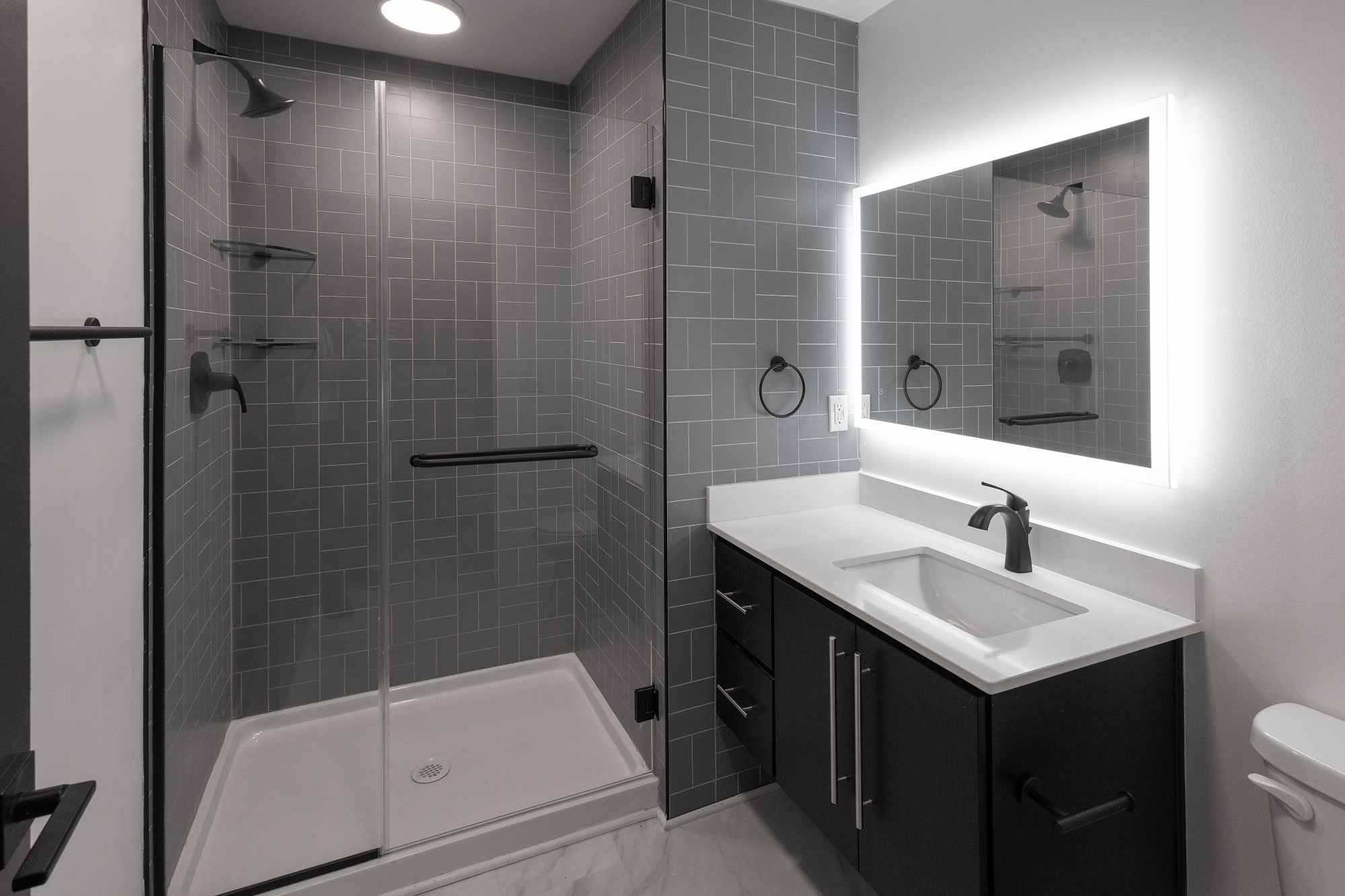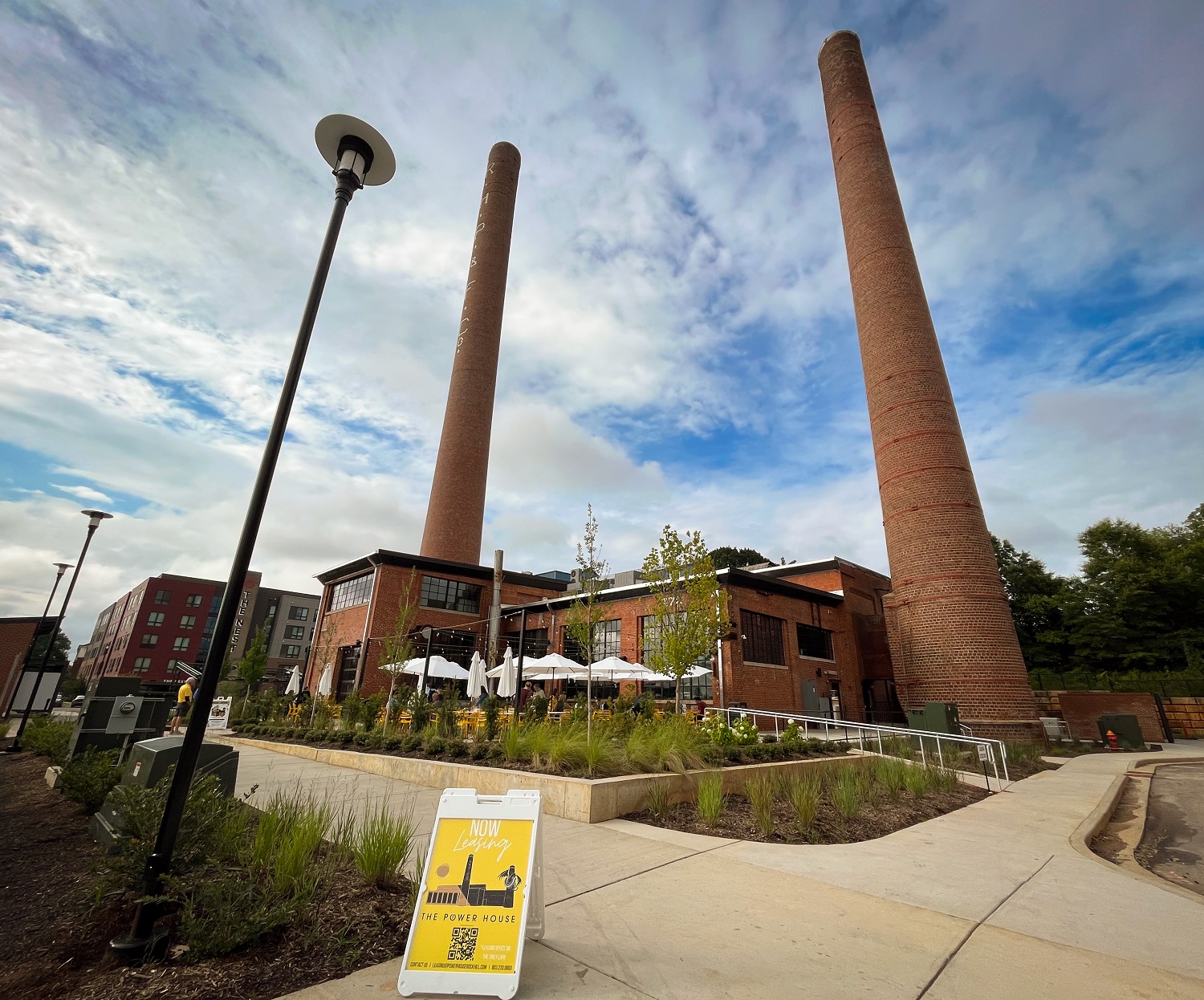To many people, the idea of re-developing the old Bleachery Mill Power House in Rock Hill, S.C., was the stuff of nightmares. But to Tara Sherbert of the Sherbert Group, it represented an opportunity to place the crowning jewel on the city’s University Center development project.
“The Power House was one of the last buildings considered in the University Center project, because it was by far the most complex,” Sherbert said. A relic of a bygone era, the building stood abandoned for decades. With six massive boilers inside and eight feet of contaminated water in the basement, renovating the building would be no small task.
“There aren’t too many people crazy enough to take on a project like this,” said Sherbert. “But we specialize in historic renovations. It’s what we do.”
Renovating the Power House would be an audacious undertaking, but the Sherbert Group wasn’t afraid of it. With help from partners like Framework Architecture and Stenzel Development – and the use of an innovative new product from Six3Tile – they have been able to resurrect a hundred-year-old building and transform it into a place people will enjoy for the next hundred years.
It all started with a new vision for the building.
A Gem in Rough Shape
Sherbert and her team envisioned the Power House as the main hub of the new University Center project in Rock Hill. Looking beyond the 60,000-square-foot structure’s many challenges, they saw a place where the community could come together to enjoy food, have a few beers, and enjoy live music.
The design included space for 37 apartments, a food court and a brewery, as well as outdoor spaces for dining and gathering. “It has a 20,000-square-foot event lawn and a dynamic stage for music and other entertainment,” said Sherbert. “It was designed for the community to enjoy year round. It’s kind of a gem.”
But polishing that gem and making it beautiful would not be easy. Not only was the building neglected for decades, it was also listed with the National Park Service. To maintain that designation, the building’s footprint, façade and architectural integrity had to remain largely intact.
And that’s just where the challenges began, as the Power House was not originally constructed to house residential and commercial spaces. “When you’re working within a historic building, you’re dealing with unusual, funky shapes and spaces,” Sherbert mused. “The structure is long and wide, but then arches up into smaller sections to accommodate the boilers and the coal troughs.”
Even the process of designing and envisioning the interior was difficult. The team of architects and engineers, led by Michael Spangenberg of Framework Architecture, had to analyze all of the existing structural steel and determine what could be removed and what had to remain. But that was impossible with the old boilers still in place.
“The boilers took up the entire interior of the building, so we couldn’t even see the historic structural steel when we started, let alone determine what needed to be kept, removed, or reinforced,” recalled Sherbert. “We had to design the building’s interior as we progressed through the project.”
Once the building was empty and the interior spaces were planned, creating the apartment units and other spaces had another layer of difficulty. Unlike in new construction, when apartment units are all nearly identical, there were no standard units in the Power House.
“We had to work around the structural steel and within the existing walls and windows,” said Sherbert. “It made for some pretty unique design and construction challenges.”
But above all, the team wanted the spaces inside the building to be distinctive and reflect the spirit of the building. The apartment units needed to be elegant and luxurious. The brewery and food court needed to represent the operators’ brands, while also providing a unique atmosphere for guests.
To accomplish these goals, Sherbert enlisted help from and old partner in Stenzel Development, and a new one in Six3Tile.

Upscale Food & Drink
Two aspects of the Power House project that would draw the most people – and therefore be the most visible – are the food court and the brewery. Stenzel Development, a contractor that specializes in restaurants and foodservice construction, led the build-out of these two areas.
“They’re going to bring in a lot of people,” said Tom Stenzel of Stenzel Development. “Everyone loves to gather at a brewery, and the food court is going to offer some great food options.”
With seven stalls, the food court will have everything hungry foodies will desire, from burgers to coffee to ice cream to soul food. Even a barber shop will be located adjacent to the food court. The brewery space will be occupied by Middle James Brewing, which is already a North Carolina favorite. The Power House will be their second location.
The foodservice area of the Power House provided a unique challenge to Stenzel and his team.
They had to accommodate the different brands of the operators, but they also had to create a space that had a unifying, cohesive look while reflecting the larger design of the Power House itself.
One of the ways Stenzel and his team accomplished that was with the tile in the food court stalls and in the brewery. But they didn’t use standard tile. They instead used a new product from Six3Tile that helped them accomplish their goals of unifying the feel of the food hall while also simplifying design and installation.

Custom Look, Fast & Easy Installation
Six3Tile’s Pro Kits are a tile panel solution that takes the complexity out of tile installation; providing a premium, luxurious feel in a fraction of the time. According to company Founder & CEO Cal Trumbo, the product represents a major leap forward for developers and contractors who use tile in their installations, because it drastically reduces installation time and labor costs, while still providing the upscale look designers want.
“Installing ceramic tile has inherent complexities and requires a certain skill set,” said Trumbo. “Our product offers that same finished look of traditional tile in a large panel format, dramatically reducing the time it takes to install.”
“It’s very simple,” Stenzel agreed. “It’s easy to cut to fit whatever corners and angles you need, and it’s lightweight and easy to work with, so we can install a lot of square footage in a short period of time.”
In addition, Six3Tile partnered with Stenzel to provide their custom design offering of inlaid designs and logos, which was important for the brewery and food court. “The logo designs in the Six3Tile panels was huge for the operators,” he continued. “They had the look of a custom tile installation in a product that took minutes to install.”

Unique and Different Apartments
Aside from the food court and brewery, the Power House was also designed to house luxury apartments. Being in a distinctive, historic building, the residential units needed to have a refined, upscale feel that matched the rest of the building.
That meant using finishing touches that made each unit feel custom and stylish. “We didn’t want typical finishes, that would go into a garden style apartment,” said Sherbert. “We wanted everything to kind of stand out and be unique and different.”
Because of the nature of the building, the apartments are a far cry from standard units in a newly constructed building. They are built to accommodate the dimension of the structure, giving them unusual floorplans and shapes.
While this made for interesting dwelling units, it made life difficult for the designers and contractors who created the apartments. Every apartment had to be designed and finished as its own distinct unit. It was not possible to place large orders of products in standard sizes, because there were no standard sizes.
Once again, Six3Tile Pro Kits made finishing the apartments easier. “Field measuring had to be fairly extensive, and we couldn’t rely on drawings to order products,” added Sherbert. “The Six3Tile panels gave us a lot of room for error, because they could easily be fitted to accommodate each space.”
Sherbert added that Six3Tile helped her designers create beautiful homes for the future residents at the Power House. “Collaborating with the Six3Tile team, we could create unique designs, color-match the grout to the walls, and create backsplashes and bathrooms that appeal to the residents’ sense of style and individuality,” she said.
That kind of design flexibility is what Six3Tile was designed for, according to Trumbo. “In our custom design line, you can choose different patterns and colors and adapt them to almost any application,” he said. Six3Tile offers standard patterns and colors as well.
And because the panels are so easy to install, they can eliminate cost-related design restrictions. “In a project like the Power House, which had so many challenges due to the nature of the building, budget constraints were a real concern,” Trumbo continued. “The Six3Tile gave Tara and her teams more design flexibility at no additional cost.”
Heart of the Community
When Sherbert and her teams first entertained the idea of renovating the Power House, she faced a great deal of skepticism. “People told us we were out of our minds,” she recalled.
But by staying true to their vision, and working collaboratively, Sherbert, Spangenberg, Stenzel, and the rest of their partners created a special venue the residents of Rock Hill will enjoy for generations. When it opens later in 2023, the Power House will be anything but a standard mixed-use building. Sherbert said she is looking forward to seeing it when it’s fully occupied, and people start enjoying all that it has to offer.
“We expect constant programming,” she said. “Music every night, weddings, corporate events, festivals. We expect it to be the heart of the community for many years to come.”
Contact Information:
www.SIX3TILE.com
info@alerismfg.com
843-410-9754

Related Stories
Resiliency | Sep 3, 2024
Phius introduces retrofit standard for more resilient buildings
Phius recently released, REVIVE 2024, a retrofit standard for more resilient buildings. The standard focuses on resilience against grid outages by ensuring structures remain habitable for at least a week during extreme weather events.
Products and Materials | Aug 31, 2024
Top building products for August 2024
BD+C Editors break down August's top 15 building products, from waterproof wall panel systems to portable indoor pickleball surface solutions.
Adaptive Reuse | Aug 29, 2024
More than 1.2 billion sf of office space have strong potential for residential conversion
More than 1.2 billion sf of U.S. office space—14.8% of the nation’s total—have strong potential for conversion to residential use, according to real estate software and services firm Yardi. Yardi’s new Conversion Feasibility Index scores office buildings on their suitability for multifamily conversion.
Adaptive Reuse | Aug 28, 2024
Cities in Washington State will offer tax breaks for office-to-residential conversions
A law passed earlier this year by the Washington State Legislature allows developers to defer sales and use taxes if they convert existing structures, including office buildings, into affordable housing.
Affordable Housing | Aug 27, 2024
Not gaining community support is key barrier to more affordable housing projects
In a recent survey, builders and planners cited difficulty in generating community support as a key challenge to getting more affordable housing projects built. The survey by coUrbanize found that 94% of respondents tried to gain community input and support through public meetings, but many were frustrated by low attendance. Few respondents thought the process was productive.
Adaptive Reuse | Aug 22, 2024
6 key fire and life safety considerations for office-to-residential conversions
Office-to-residential conversions may be fraught with fire and life safety challenges, from egress requirements to fire protection system gaps. Here are six important considerations to consider.
Multifamily Housing | Aug 21, 2024
Nation's leading multifamily developer expands into infrastructure
Greystar's strategy for infrastructure is driven by the shifting landscape of today's cities—primarily in the increased digitization, urbanization, and transitions to clean energy.
MFPRO+ New Projects | Aug 20, 2024
Seattle workforce housing project inspired by geology of eastern Washington
J.G. Whittier Apartments, a workforce housing project in Seattle uses the geology of eastern Washington as inspiration for the design. The architecture and interior design celebrate geometric anomalies found in nature. At the corners of the building, blackened wood siding “erodes” to expose vibrant murals underneath.
MFPRO+ New Projects | Aug 16, 2024
At 60 stories, the Paramount multifamily development will stand as Nashville’s tallest high rise
When complete, the 60-story Paramount building, at 750 feet high, will be the tallest high rise tower in Nashville, Tenn., surpassing the city’s current record holder, the 617-foot AT&T Building. The $390 million Paramount project recently launched condo sales after securing more than $230 million in construction financing.
Curtain Wall | Aug 15, 2024
7 steps to investigating curtain wall leaks
It is common for significant curtain wall leakage to involve multiple variables. Therefore, a comprehensive multi-faceted investigation is required to determine the origin of leakage, according to building enclosure consultants Richard Aeck and John A. Rudisill with Rimkus.
















